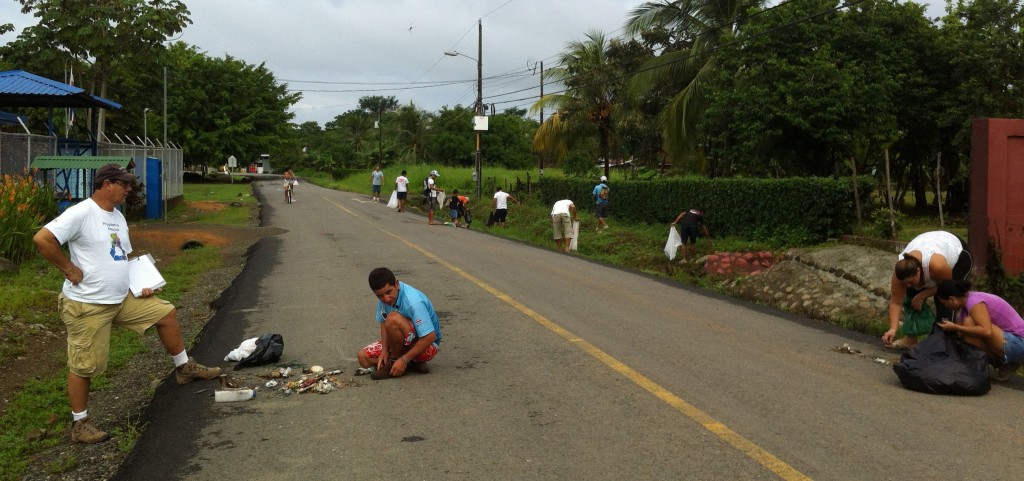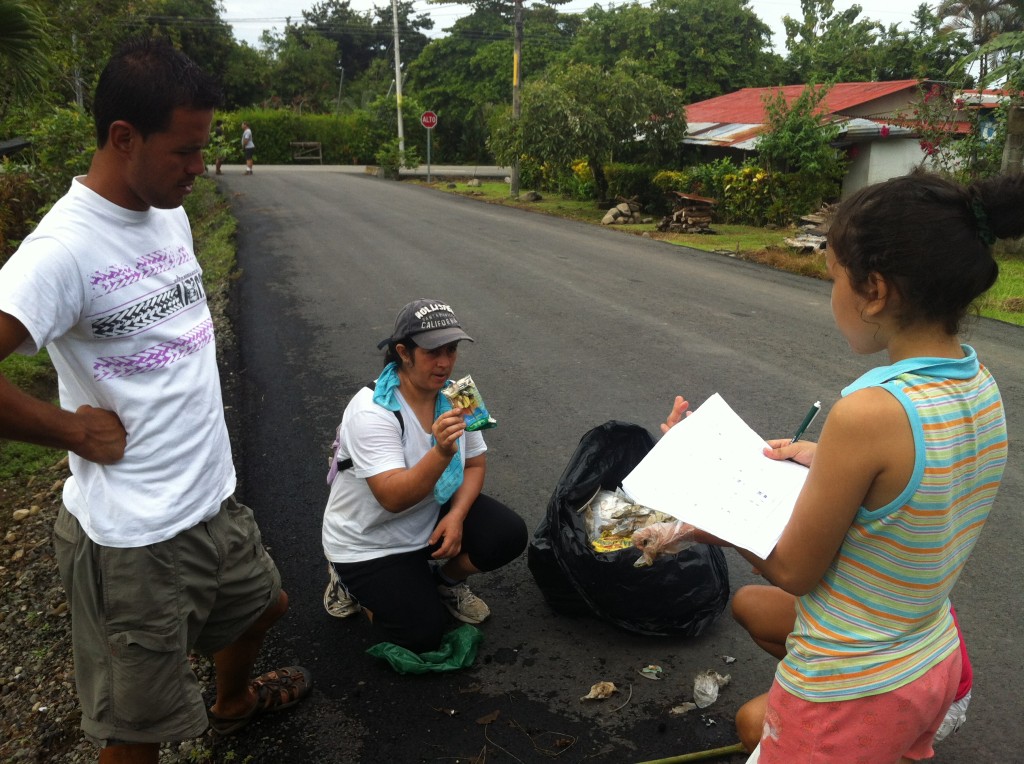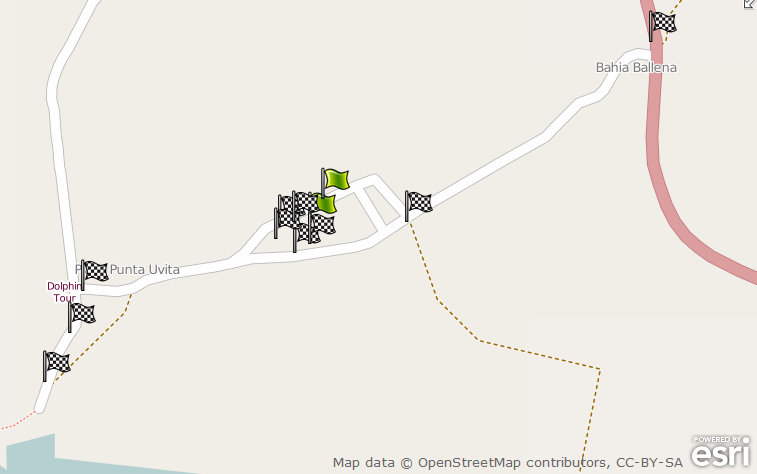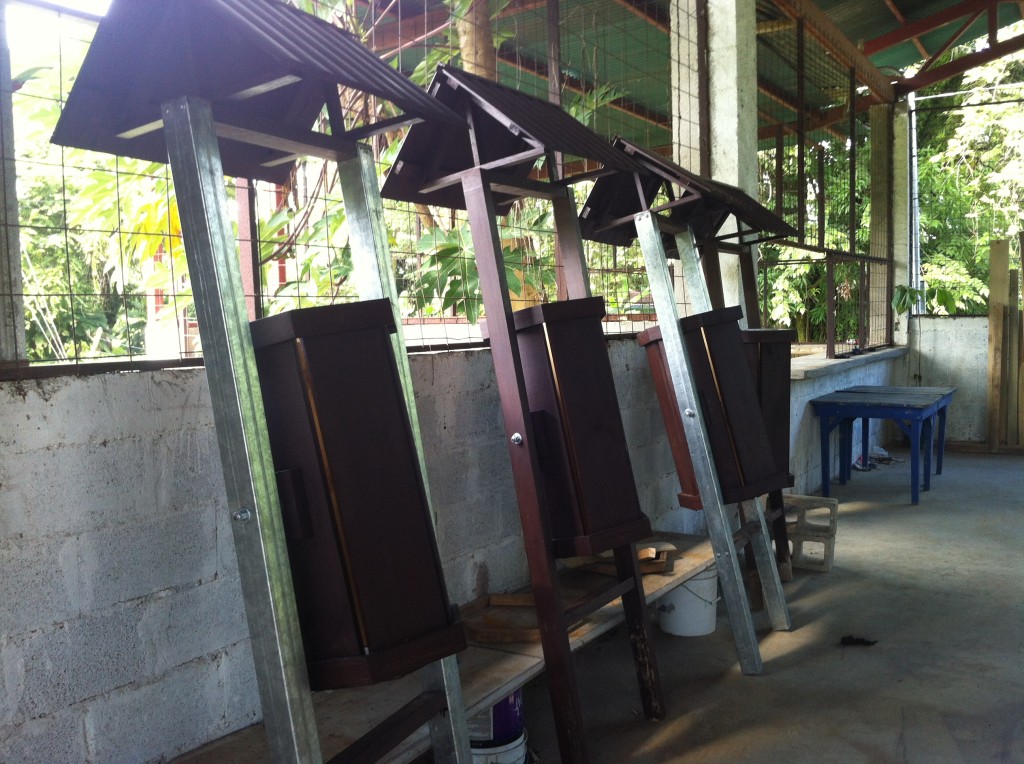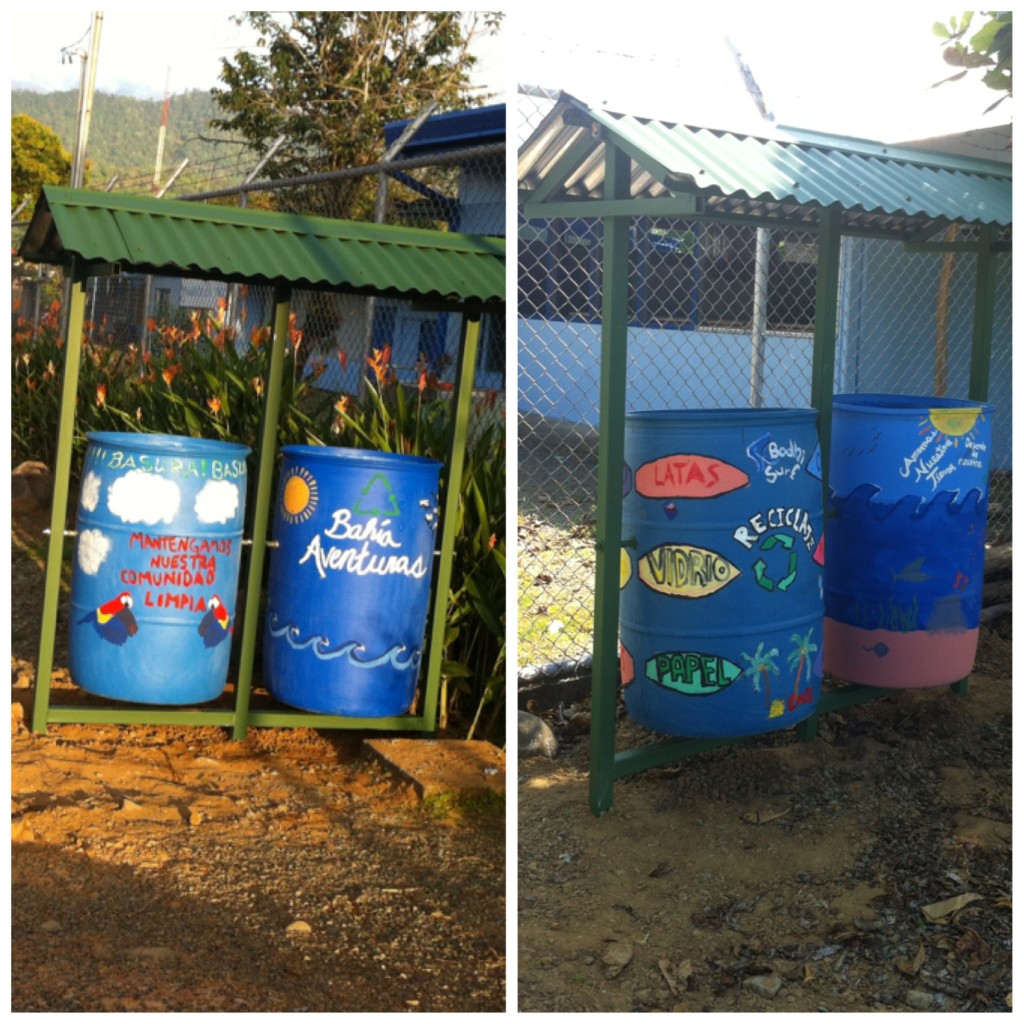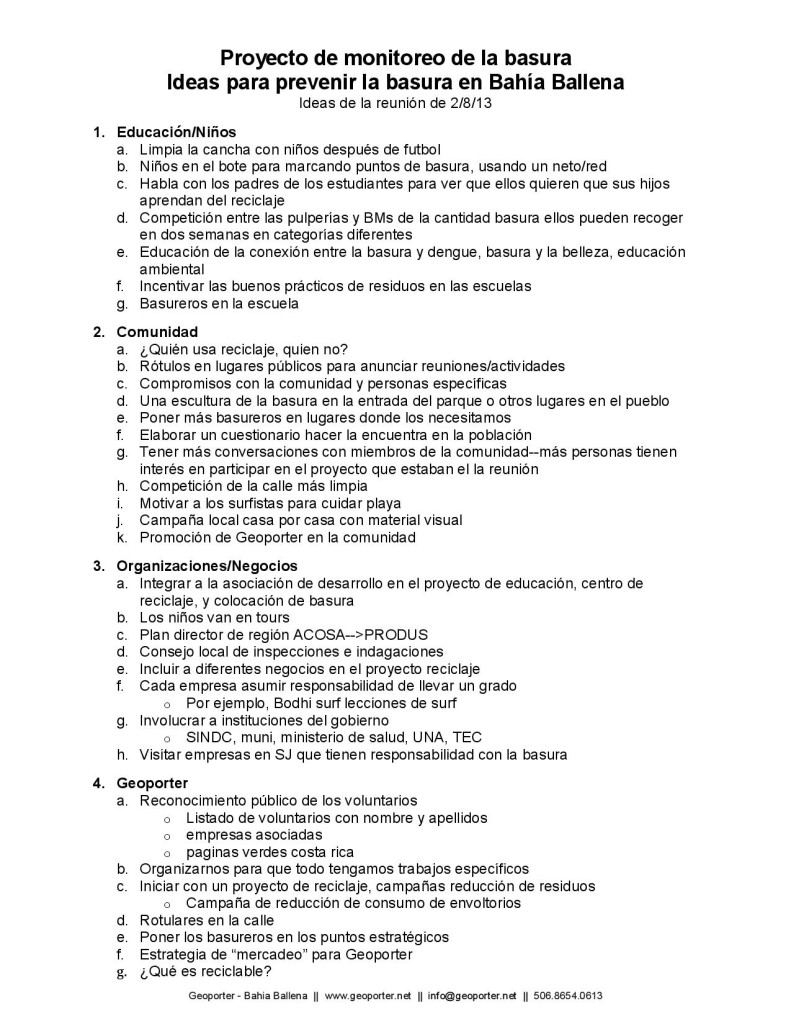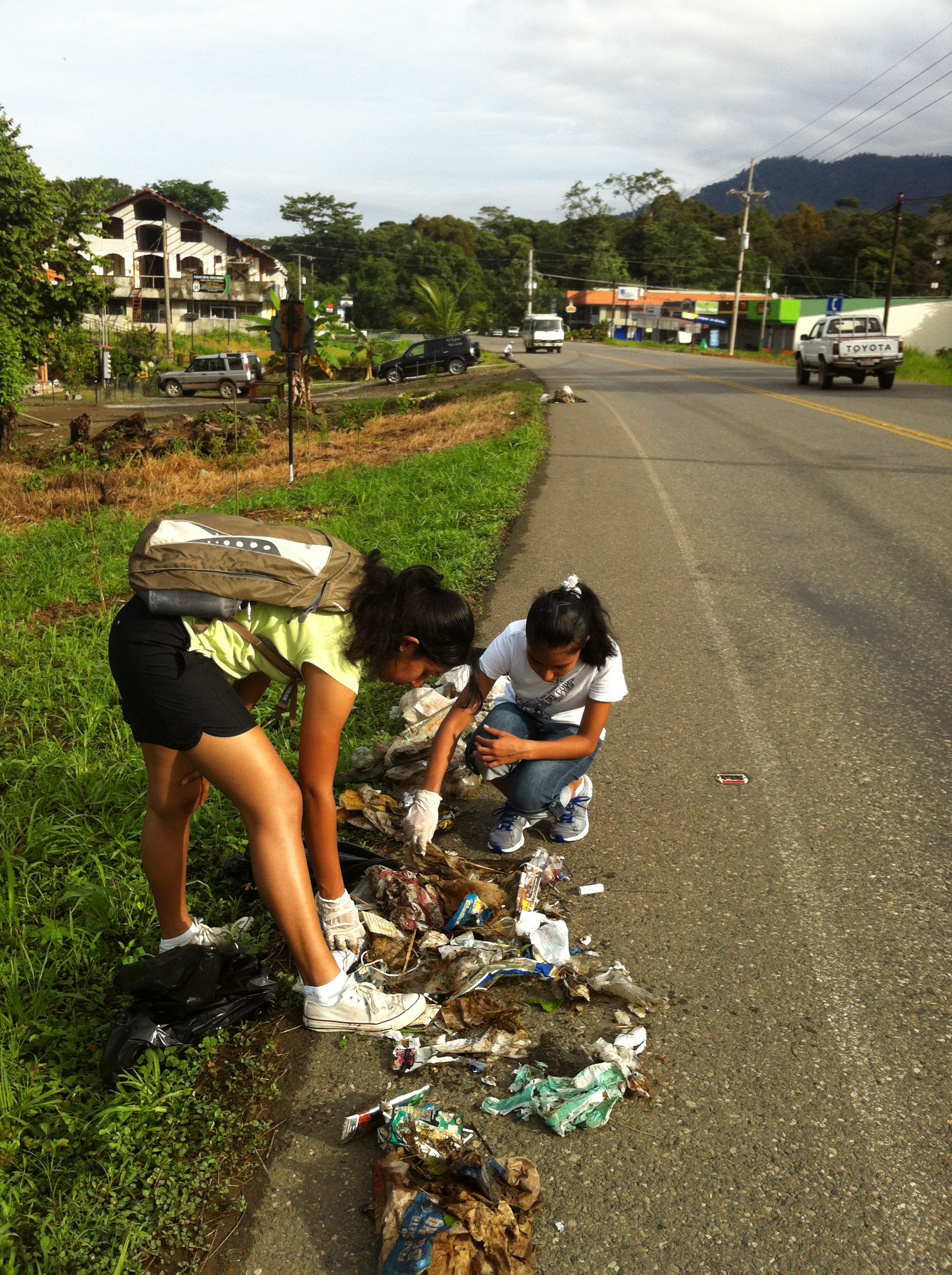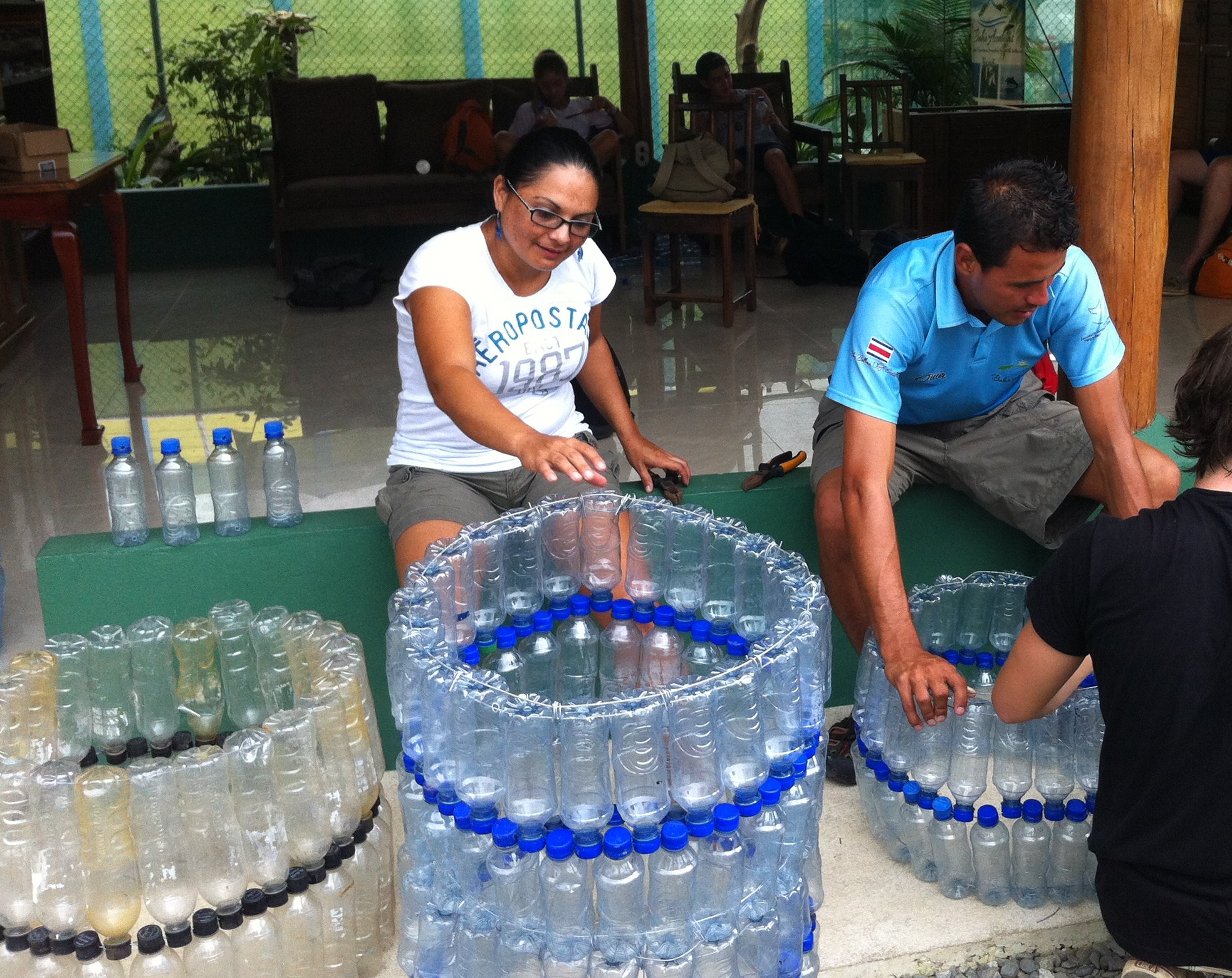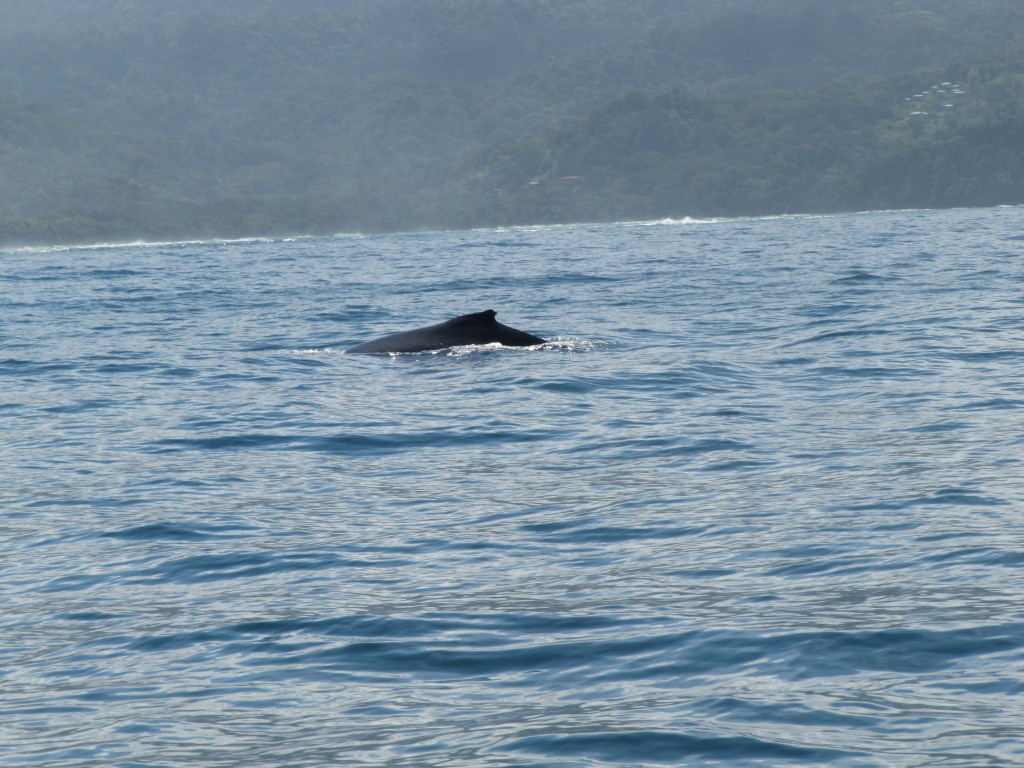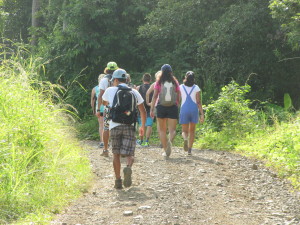Since April, various individuals from Bahía-Uvita have been working together to understand a serious problem that impacts communities around the world: Trash. Every Friday, starting the first week in April, individuals have gathered to pick up trash from the streets. Each week a new location is selected for the cleanup. But, this isn’t just any ordinary community trash collection. Residents are using GPS technology to record the location of the trash they collect and then using GIS (Geographic Information Systems) to create maps that show the amount of trash and type of trash collected.
The approach residents selected to map the trash is: to count and classify the type of trash in a 24m radius along the streets and beaches. The resulting trash map shows the areas that have the greatest amount of trash.
As a community, we could continue to collect trash every Friday for the rest of our lives. But that is not the answer to the trash problem. Rather, we have to take action to prevent trash from entering our streets in the first place. Using the trash map, we as a community have identified where new public trashcans (checkered flags on map), to use for both trash and recyclables, need to be placed. The community is working now to gather the resources and materials to construct trashcans to place in the identified locations.
The Asociación de Desarrollo Integral de Uvita recently constructed 4 trash cans to place in Bahia-Uvita. These are in addition to the trash and recycling cans sponsored by Bodhi Surf School and Bahía Aventuras (green flags on map) in January and the materials that others such as the Asociación de Guías and the Asociación de Operadores de Turismo y individual businesses are looking to also provide.
Placing trashcans in public locations is not the only solution to eliminating trash. Education and outreach are also important for understanding what we can do today as well as how our actions today can impact the future. The last two Fridays Geoporter has switched from trash collections to discussions about what actions can we take to reach out to students, community members, businesses and tourists who visit our community. The ideas generated from the first meeting were plentiful and impressive, but not the final list. The list will continue to grow as others submit ideas and choose to take responsibility for helping to implement the actions that will benefit the community.
During this last meeting, the group highlighted the most important items to carry out as a community and what each person would be willing to commit to doing. Thus for future Fridays individuals will work on items they commit to and report back. We invite all those interested in assisting to join our meetings and conversations and to share new ideas and commit to an action(s) that is important to them.

